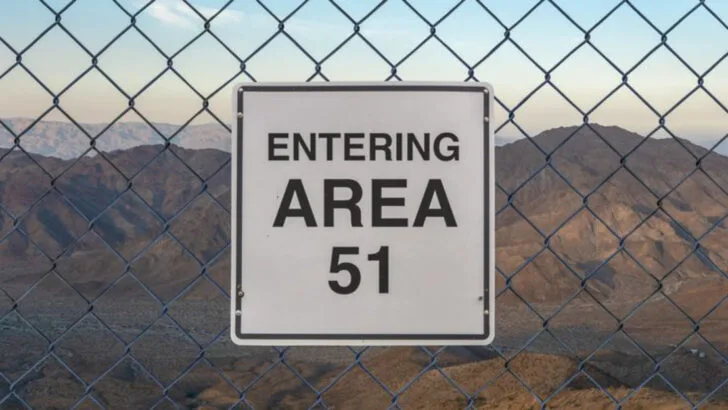Explore the fascinating world of places that remain shrouded in mystery and off-limits to the curious traveler.
From islands teeming with dangerous wildlife to ancient sanctuaries and secretive government sites, these locations pique our imagination and challenge the boundaries of exploration.
While legal and safety concerns keep them hidden, their allure only grows, feeding our desire to uncover the unknown.
Whether driven by cultural preservation, natural danger, or clandestine activities, each of these places tells a unique story about our world.
North Sentinel Island, India
The Sentinelese tribe has thrived in isolation on North Sentinel Island for millennia. Fiercely protective, they reject all outside contact.
Visits are not merely discouraged but illegal, as Indian law enforces a buffer zone for everyone’s safety. Despite the prohibition, the island remains a symbol of untainted human heritage.
In a world where exploration knows no bounds, North Sentinel Island stands as a testament to the right to remain undisturbed. The allure of such untouched wilderness continues to fascinate those who yearn for adventure.
Snake Island (Ilha da Queimada Grande), Brazil
Imagine an island where venomous vipers outnumber humans. Snake Island, off the coast of Brazil, hosts thousands of golden lancehead vipers, rendering it one of the world’s deadliest places.
The Brazilian Navy enforces a strict ban on visitors, prioritizing safety over curiosity. Only select researchers venture here under tight regulations. Despite its petrifying reputation, the island’s unique ecosystem is a haven for herpetologists.
The existence of such a perilous location ignites the adventurous spirit, intriguing those captivated by nature’s lethal side.
Lascaux Caves, France
The Lascaux Caves in France offer a glimpse into humanity’s distant past, featuring paintings over 17,000 years old. However, public access ended in 1963 when mold from visitors’ breath threatened these irreplaceable artworks.
Now, only forensic experts can enter, while replicas provide a substitute for the public. The caves remain a symbol of artistic heritage, preserving stories of early human life.
The intrigue of these ancient masterpieces often draws art lovers and historians, inviting them to ponder the dawn of creativity.
Svalbard Global Seed Vault, Norway
Nestled in the Arctic, the Svalbard Global Seed Vault serves as a Noah’s Ark for seeds, safeguarding global biodiversity.
This ultra-secure facility, built to withstand natural and man-made disasters, is off-limits to the public. Only approved scientists and guardians gain entry to preserve over a million seed samples. As a beacon of hope for future generations, the vault symbolizes resilience and foresight.
Its mission is pivotal in ensuring food security, capturing the imagination of those passionate about sustainability and future-proofing our planet.
Ise Grand Shrine (Inner Sanctuary), Japan
Ise Grand Shrine, a spiritual epicenter in Japan, is shrouded in secrecy. Only the high priest or a member of the imperial family may enter the inner sanctuary.
The design, rebuilt every 20 years, exemplifies Shinto beliefs in impermanence and renewal. Visitors can explore the surrounding grounds but the heart of the shrine remains concealed.
This reverence for tradition captivates those fascinated by cultural heritage. The shrine stands as a powerful reminder of spiritual devotion and the sacred ties between nature and mankind.
Mausoleum of Qin Shi Huang, China
The Mausoleum of Qin Shi Huang, China’s first emperor, is a marvel of ancient engineering. Buried beneath a hill and guarded by the famous Terracotta Army, the actual tomb remains unexcavated, preserving its secrets.
The Chinese government restricts access to protect the site and respect cultural heritage. For archaeologists, this untouched resting place is a tantalizing enigma.
The blend of historical significance and mystique invites curiosity and admiration, keeping the spirit of ancient China alive in the modern world.
Area 51, USA
Area 51, nestled in Nevada’s arid desert, is synonymous with secrecy and speculation. This U.S. Air Force base is rumored to host everything from experimental aircraft to extraterrestrial investigations.
Public access is strictly prohibited, guarded by extensive security measures. The shroud of mystery fuels conspiracy theories and speculative intrigue. For UFO enthusiasts and curious minds alike, Area 51 represents the ultimate symbol of hidden knowledge and governmental secrecy.
Its enigmatic presence continues to inspire countless stories and imaginations.
Poveglia Island, Italy
Poveglia Island off Venice’s coast is shrouded in dark folklore. Once a quarantine station and later an asylum, the island closed to the public due to its haunted reputation and safety hazards.
It’s a forbidden destination for ghost hunters and thrill-seekers drawn to its eerie past. The tales of restless spirits and tragic histories add layers to its somber allure.
For those fascinated by the macabre, Poveglia stands as a testament to Italy’s rich, albeit dark, cultural tapestry.
Heard Island, Australia
Heard Island, located near Antarctica, is a pristine wilderness of volcanic peaks and glaciers. Its remoteness and harsh climate deter casual visitors, while strict access regulations protect its fragile ecosystem.
Only a few scientists gain entry to study its unique geological and biological features. This untouched environment appeals to those captivated by nature’s extremes.
As global warming reshapes our planet, Heard Island serves as a crucial site for understanding environmental change and preserving earth’s natural wonders.
Inaccessible Island, Tristan da Cunha
Inaccessible Island, part of the Tristan da Cunha group, lives up to its name. Its steep cliffs and remote location deter visitors, preserving its untouched beauty.
Access is limited to rare permits and short seasonal windows, primarily for scientific research. This isolation creates a haven for wildlife, particularly seabirds.
For adventurers and nature enthusiasts, the island embodies the allure of the unknown. Its pristine environment is a reminder of earth’s raw, untamed splendor and the importance of conservation efforts.
Mezhgorye, Russia
Mezhgorye is a closed town in Russia, rumored to house secretive military or nuclear facilities. Access is tightly controlled, limited to residents or officials with clearance.
Its clandestine nature fuels speculation and intrigue, drawing the attention of those curious about Cold War-era secrets. This shrouded town remains a symbol of mystery and geopolitical tension.
For historians and espionage enthusiasts, Mezhgorye represents a lingering enigma, echoing the shadowy past of Soviet-era Russia and the ever-present undercurrents of global politics.
Room 39, North Korea
Room 39, nestled within Pyongyang, is one of the most secretive entities in North Korea. Believed to manage illicit finances for the regime, its operations are cloaked in mystery.
Tourists and locals alike find its existence puzzling, fostering curiosity and speculation. For those intrigued by clandestine economic activities, Room 39 represents the enigmatic world of North Korean politics and power.
The secrecy surrounding it fuels intrigue and fascination, offering a glimpse into the opaque workings of a reclusive nation.
Uluru Climbing Path, Australia
Uluru, a sacred site for the Anangu people, stands proudly in Australia’s outback. In 2019, climbing was banned, respecting indigenous beliefs.
Visitors can engage with its cultural stories and appreciate its beauty from a distance. The decision reflects a broader movement towards honoring traditional custodianship. For those drawn to cultural understanding, Uluru symbolizes a deep connection between land and spirit.
The ban on climbing highlights the importance of preserving cultural integrity and respecting ancestral traditions for future generations.
Morgan Island “Monkey Island,” USA
Morgan Island, also known as “Monkey Island,” is home to a thriving rhesus monkey colony. Closed to the public, it serves as a research site for primate studies.
The island’s secluded nature prevents disease transmission and protects the habitat. For animal lovers and researchers, it embodies the intrigue of wildlife conservation and scientific inquiry.
This lively island is a sanctuary of discovery, where the mysteries of primate behavior unfold away from human interference. Its vibrant ecosystem invites awe and respect.
Chernobyl Exclusion Zone (inside reactor area), Ukraine
The Chernobyl Exclusion Zone, site of the 1986 nuclear disaster, remains a poignant symbol of human error and resilience.
While guided tours are allowed in the outer areas, the reactor’s inner sanctum is strictly off-limits due to severe radiation. This restriction highlights the lingering dangers of nuclear energy.
For those drawn to history’s impactful events, Chernobyl serves as a stark reminder of past mistakes. The zone’s eerie silence and slow reclamation by nature paint a picture of recovery amidst tragedy.

